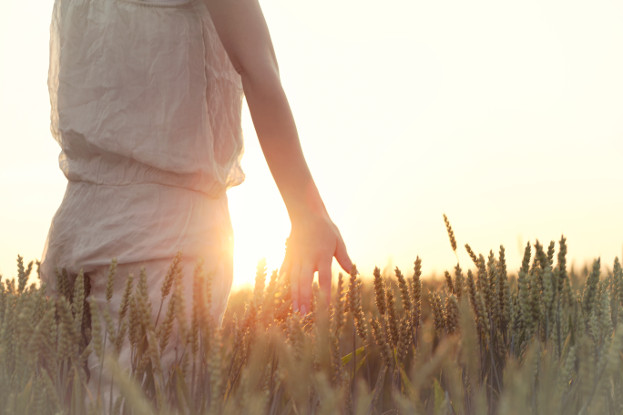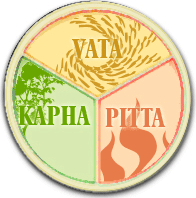SKIN HEALTH

 Categories in SkinSkin Color IssuesSkin TriggersSkin TypeComplexion TypeSkin OtherSkin Problem LocationLipsIntroductionBeautiful skin, in Ayurveda, is the ultimate measure of bodily health and well-being. The skin is like a window to the rest of the body. It can reveal what is happening on a much deeper level. An Ayurvedic practitioner can assess which doshas, organs, and systems are out of balance just by looking at the skin. Problems that appear on the surface of the skin are usually caused by imbalances deeper within.To some degree, the entire body is made of layers of membranes, and each of these membranes has much in common with skin. What you see on your skin, can often be found on membranes within. The quality of the skin is closely related to the circulation and quality of the blood. Poetically in Ayurveda, the skin is considered to be the cream of the blood that rises to the surface. The foundation of good skin, therefore, is balanced blood chemistry. But what affects the quality of the blood? All of your organs and tissues affect blood chemistry. Therefore, the skin is truly connected to the health of the blood, all the organs, and the whole body. Since skin is so important in assessing health, Ayurveda practitioners study the skin carefully, and can identify which organ may be causing your complexion catastrophes. By learning to recognize and decipher an imbalance of the skin, you will be able to understand and rectify its root cause, too. Functions of SkinThe skin is an organ of protection. It is the physical barrier between your body and the outside world. It keeps you safe from harmful radiation and microorganisms.The skin also serves an important role of maintaining body temperature. It keeps you warm through body hair, an insulating layer of fat, and by contracting blood vessels and pores (goosebumps) when cold. It cools you down by sweating and dilating blood vessels in the heat. The skin is a sensory organ that enables you to experience your surroundings through touch. Highly enervated, it allows you to experience pressure, pain, hot, and cold. The skin keeps essential fluids within the body, assists in the removal of waste products through sweat, and also regulates the production of and stores vitamin D in the fat tissue. Anatomy of the SkinWestern science categorizes the skin into 3 main layers: the epidermis (the outermost layer that provides tone to the skin and acts as a barrier), the dermis (thick layer of tough connective tissue, sweat glands and hair follicles) and the subcutaneous layer (fatty layer that helps regulate body temperature).Ayurveda breaks the skin down into 7 layers. Sushruta, the ancient Ayurvedic physician, outlines these layers in his seminal text, Sushruta Samhita. Each layer has its own role and, when out of balance, leads to certain disorders. Ayurveda's Care of the SkinThe skin is a sensitive organ and Ayurveda treats the skin gently. Ayurveda suggests care regarding which substances touch the skin because the skin can absorb environmental and chemical toxins that come into contact with it. A popular saying in Ayurveda is, "Don't put it on your skin if you wouldn't eat it."Soap is harsh. Most practitioners advise strategic use of soap in private areas only. Otherwise, rinsing the skin is sufficient for cleanliness, and helps maintain a healthy skin biome. Practitioners may also cleanse the skin by massaging oil into the skin and then, if desired, rubbing with a sea salt scrub to exfoliate and cleanse. Oils like coconut oil have antimicrobial properties, feeding the good bacteria and eliminating the bad. Oil massage (Abhyanga) is one of the main skin-tonics of Ayurveda. Internal consumption of liver tonics such as turmeric, and vasodilating circulatory tonics such as Holy Basil, all server to keep the skin fresh and vital looking. Ayurveda also has a science of skin pastes (Ubtans) for cleansing the skin and improving skin health topically. An ubtan may be made from ground oatmeal, ground almond flour or chickpea flour, depending on the amount of moisturization, oils, and astringency desired in the formula. Herbs may be added to the ubtan for enhanced effect. What Causes a Skin Imbalance?Skin disorders are usually a symptom of a deeper imbalance. Before treating a skin disorder topically, Ayurveda looks for the root cause. Addressing the root cause is more effective because it resolves the skin disorder at its source. Commonly, the root cause of skin disorders can be traced back to systemic imbalances.Once the root cause has been addressed, topical treatments are also used. Topical treatments often reduce the symptoms of a skin condition initially and can be quite effective. But unless the cause is removed, the disorder is likely to return at one point or another. Here are some root causes of skin disorders:
Finally, the skin can also be easily damaged by connective tissue disorders, overexposure to the sun, fungal or bacterial infection, disruptions in skin microbiome, or physical trauma like an open wound. Common AilmentsThin, Dry, Wrinkly SkinIn Ayurveda, thin skin is a disorder associated with lack of nourishment and deficiency (low ojas and Vata dosha). Physically, thin skin is often dry, wrinkly, and fragile. To nourish and build thicker skin, follow an ojas building diet. Golden milk with ashwaghanda is especially nourishing.Massage your body with half and half mixture of Sesame oil and Vata Oil for especially supple skin. Oil hydrates and softens a brittle thin skin. For dry skin on the scalp, perform a head massage with bhringaraj oil. Lusterless ComplexionThe healthy glow of skin is a reflection of good overall health. Lusterless, gray skin, on the on the other hand, indicates the skin is cold and full of Vata ama, often due to poor digestion or stagnation of the bowels. To improve your flow and luster, reduce gas and bloating by eating easy to digest foods. Secondly, clear the bowels with a mild laxative such as Gentle Laxative Tea. Finally, warm up the skin by adding turmeric to your food, and drinking Holy Basil Tea. The use of a diaphoretic like Holy Basil will dilate blood capillaries, increase blood circulation and bring warmth to the whole body, including cold hands and feet. If you are anemic, strengthen the blood with foods containing iron.Inflamed SkinHives, eczema, psoriasis and itchy irritated skin, are signs the skin is inflamed. These are frequently related to systemic inflammation and irritation of the liver associated with high Pitta dosha. Start by bringing Pitta dosha back into balance with a Pitta pacifying diet, making sure to include bitters like kale and herbs like Bhumyamalaki. Bhumyamalaki supports healthy liver function as it is a cholagogue, meaning it stimulates the release of bile from the liver and assists in efficient digestion. The liver must also be cared for when there is toxins in the blood. Consider adding alteratives like amalaki to your herbal tea. Alteratives are blood cleansers and purifiers, which can help clear up acne and reduce inflammation.Acne, Oily SkinAcne, whiteheads, blackheads, and cystic acne are often the results of oily skin. Where there is acne, there is usually an imbalance of kapha, pitta, and ama. Add more bitters such as kale to your diet, and reduce oil and sugar if possible. Liver & Lymph Cleanse Tea will combat the heaviness of oily skin. It may help to wash the affected skin with neem tea, an antibacterial and anti-inflammatory. Neem also dries up excess oil on the skin. Or, add a drop of neem oil to a coconut oil massage. This combination is also a powerful anti-inflammatory.Puffy SkinPuffy skin is often teamed with a clammy feeling in the hands. This skin condition is associated with Kapha dosha and excess water retention. To relieve the uncomfortable, puffy feeling in the skin, diuretics, such as punarnava and gokshura, are used to help clear the excess water weight. Taking in excessive amounts of water, sour, and salty foods will all increase water retention, so are best avoided if you are experiencing puffy skin.Liver Spots & MolesIn Ayurveda, liver spots may appear on the skin if there is deficiency in the liver. In some cases, moles may also be a sign of liver stress. To keep the skin pigmentation balanced, the liver needs to be nourished and the blood cleansed. Blood quality can be improved by the use of alteratives like manjishtha. Manjishtha clears the blood of excess Pitta heat and ama. It stimulates blood circulation, so is known for its ability to remove stubborn lesions. It also rejuvenates the skin and supports a healthy, glowing complexion.Skin TonicsCertain Ayurvedic tonics rejuvenate the skin. They keep your skin firm, toned, strong, and leave you with a glowing complexion. The below tonics can be categorized depending on your unique body type.VataVata types should perform a daily self massage with sesame oil or Vata oil. The oil can be applied liberally to hydrate and replenish depleted skin. It's also important for Vatas to maintain good hydration throughout the day, or they are likely to experience dry and cracking skin. Shatavari and dashamoola are suitable general tonics for pacifying Vata and promoting ojas.PittaPittas need to keep their skin cool and calm to reduce inflammatory outbreaks. A coconut oil or Pitta oil massage can be performed daily. Aloe vera juice is a suitable tonic for Pitta which coats and soothes the lining of the digestive tract and keeps inflammation at bay. Aloe vera also supports a healthy liver which is essential for maintaining clean blood. Used externally, aloe vera gel heals abrasions and soothes inflammatory conditions like psoriasis, ulcers, and eczema. A word of warning, Pitta skin is the most sensitive to the sun, so take care to stay out of the midday rays!KaphaKapha skin only requires a little bit of oil, as it is naturally the most oily skin type. A hot invigorating oil like mustard oil added to a warming carrier oil like Kapha oil will help stimulate any lymphatic or circulatory stagnation beneath the skin. Kapha types can skip the oil massage every other day and practice dry brushing instead. This is a powerful lymphatic simulator that breaks down accumulations and promotes strong circulation. Kaphas also need to be more aware of their likelihood to retain water, so a diuretic tea like cumin, coriander & fennel tea can keep water levels balanced, while also stimulating a sluggish digestive system.ConclusionAyurveda provides a unique outlook on how to care for your skin. Although Ayurveda does offer excellent topical skin treatments, the internal imbalance that causes the condition is the first priority. The skin reflects the health of the blood, liver and the digestive system. These systems are closely intertwined, so healthy blood chemistry and strong digestion are essential components for healthy skin.The skin is a sensitive and exposed organ that should be treated with care. It is designed to be a strong and protective barrier, and has the ability to shield you from harmful pathogens. However, the skin is prone to a variety of disorders depending on your age, diet, lifestyle and individual body type. By supporting digestion and cleaning toxins from the blood, the skin will be soft, supple, clear, vibrant, and strong. Skin can lose tone and strength over time, but you can care for it with rejuvenative tonics specific to your body type to keep your skin clear, smooth, and bright. Herbal Actions Affecting Skin
HOW AYURVEDA WORKSARE YOU WONDERING HOW AYURVEDA CAN HELP YOU?WHY IS AYURVEDA THE RIGHT SOLUTION?Ayurveda strengthens the body while opposing disorders. It takes a holistic, systemic approach that looks at the whole body. Ayurveda shows how to interpret signs and symptoms of imbalance, and how to address them using diet, lifestyle adjustments, and herbs. It shows a person how to optimize their health on a continual basis. You can't take the doctor home with you, but you can take Ayurveda home with you. Ayurveda is the most advanced and easy to use home system for self healing.HOW DOES AYURVEDA WORK?Ayurveda starts by identifying your body type, which identifies certain tendencies in your body to get sick (as well as identifying your strengths). It uses body type to determine the likely root causes of your disorders. Next, Ayurveda analyzes the nature of your disorder. It fits all your signs and symptoms into a pattern, expressed as a combination of biocharaceristics (gunas). For example, you may have a heat disorder, a cold disorder, or an oily disorder, etc. This simple categorical approach shows you how to correct systemic imbalances and strengthen your body as a whole.On Joyful Belly, we've created an extensive categorization of food so you can easily match food to your imbalanced biocharacteristics. By eating an optimal diet that balances your biocharacteristics, your whole body is strengthened and the conditions that created the disorder are removed. Once the root causes of the disease are removed, the disease lessens in strength or disappears altogether. Additional remedies - such as herbs and lifestyle practices - focused on the specific disorder, can greatly enhance your healing. GET STARTEDTo get started on your Ayurvedic journey, we first recommend that your find your body type by taking our free quiz. In Ayurveda, every solution is based on your unique body type, so by taking this quiz, you’ll get the best results. |
Join Joyful Belly.
Want our top Ayurvedic recipes and health tips?Subscribe to our free newsletter!






